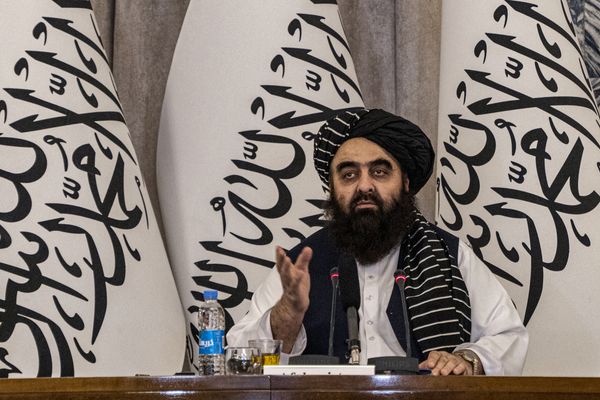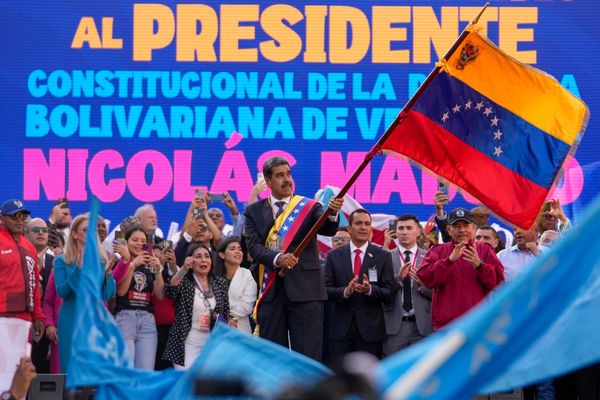
In the early days of the coronavirus pandemic, people worldwide were worried. Dispatches out of Italy and New York depicted grim scenarios of flooded hospitals and dying patients. The poor responses of most of the Western world, supposedly more prepared than most for a pandemic, meant predictions of disaster for poorer nations—especially India’s 1.2 billion people.
India seemed like the perfect place for COVID-19 to run wild—health infrastructure is underdeveloped, population density is high in urban areas, and the country already suffers from high rates of other diseases like tuberculosis and malaria. Everyone was preparing for a disaster—but it never arrived.
In part at least, that was because of swift action by the authorities. The central government quickly acted, issuing a lockdown across the country and nearly everyone, from Prime Minister Narendra Modi down, got serious about masking up. Other factors also seemed to be working to the country’s advantage; India has a younger population than most other countries, and there was discussion of preexisting immunity among the population.
For a while, it looked as if things were improving—case counts kept falling, and the government and its allies made sure to point that out. Last September, during the lead-up to assembly elections in Bihar, Modi’s Bharatiya Janata Party (BJP) claimed the state would soon be COVID-free. Likewise in October, the BJP’s national spokesperson went on the BBC and argued that India was almost back to normal.
But a complicating factor was the relatively small size, under $300 billion, of the coronavirus aid package passed by the government. (By comparison, the United States, with a population of less than one-third of India’s, has spent a few trillion dollars so far.) India had to be more fiscally cautious than the United States, though; the country doesn’t have U.S. spending capacity and was worried about a possible downgrade in debt. With less relief, people needed to get back to work sooner, and the lockdown was unsustainable—if people don’t have the money to eat, everything else is pretty much irrelevant.
And beyond the financial aspect, people in India stopped taking the pandemic seriously. This isn’t new when it comes to health issues. For the past few years, for instance, the government has tried to ban firecrackers in New Delhi around the Hindu festival of Diwali because of how they add to air pollution. These bans are usually ignored because the air quality is already incredibly poor without the firecrackers and, in light of that, the requests seem unreasonable.
Early on, both the government and opposition made a show of how important it was to abide by all the rules. However, as time went on and India seemed to have dodged the worse, elites became less concerned about setting a good example. Last November, as Delhi’s COVID-19 cases were increasing by about 30,000 to 40,000 per day, Chief Minister Arvind Kejriwal celebrated Diwali live at a temple while appealing to his followers to virtually join him. Other opposition parties weren’t much better, turning COVID-19 measures into a political tool, such as when former Uttar Pradesh Chief Minister Akhilesh Yadav attacked India’s homegrown vaccine as an untrustworthy product of the BJP.
At first, that might be forgivable given that India’s numbers seemed relatively low. But in February and March, as the virus numbers swung upward, the government and its allies got even more irresponsible. In mid-February, while the uptick was in progress, Health Minister Harsh Vardhan appeared at an event supporting an ayurvedic medication (a pseudoscience heavily pushed by the BJP) that the World Health Organization clarified was ineffective in fighting COVID-19. Shortly after this, the BJP’s national committee passed a resolution arguing that India was victorious in the fight against COVID-19, echoing claims made by Modi in his January speech to the World Economic Forum.
While all this was happening, campaigning for the five 2021 assembly elections was in full swing. West Bengal, Kerala, Tamil Nadu, Puducherry, and Assam were all heading to the polls. Kerala, Puducherry, and Tamil Nadu all had one day of polling, but West Bengal and Assam had multiple phases. This meant that different assembly constituencies were voting at different times rather than the whole state heading to the polls at once.
While phases can be combined by the Election Commission of India, that option wasn’t taken. With elections came rallies, and pretty much every major political leader drew thousands of voters at each one. Modi was initially set to address more than 20 rallies, and Home Minister Amit Shah as well as BJP President J.P. Nadda were to address more than 50 apiece. The rallies were not exclusive to the BJP; in West Bengal, the ruling Trinamool Congress also had a fair amount of them, as did the Indian National Congress-led alliance.
Protest leaders haven’t done much better in setting an example. The farmers’ protests that started last fall against the new agriculture laws have continued. Protest encampments have not emptied out—instead, they have seen their numbers increase. When questioned, the farmers have argued that when the protests against the Citizenship Amendment Act shut down due to COVID-19, they lost momentum and this was not a mistake they wanted to make. However, the continuing protests have caused some level of worry—thousands of people congregating anywhere is a threat to public safety.
Throw religion into the mix of failed leadership, too. In March 2020, a Muslim religious congregation took place in Delhi that ended up being a superspreader event. The event and attendees were heavily criticized, especially by Hindu nationalists, for spreading the virus—but Hindu festivals have had the same effect.
The Kumbh Mela is an especially sacred Hindu tradition—on a 12-year cycle, four separate regions celebrate this festival. Initially, the Haridwar Kumbh Mela was scheduled to happen next year, but it was moved up due to astrological concerns. Past versions of these events have seen up to 30 million people gather in one day, and despite the rising case counts and concerns about it being a superspreader event, the festival went on as planned, with officials saying that it would not be cut short. Additionally, much of India celebrated Holi in late March, and like the Kumbh Mela celebrations, attendees tended to ignore masking as well as social distancing.
Now, weeks, days, and months after all of these decisions were made, politicians are realizing the seriousness of the disaster. After the Kumbh Mela kicked off, Modi asked for people to celebrate symbolically. Additionally, the political campaigners have finally started shutting down. Rahul Gandhi was the first to announce on April 18 that he would be canceling the remainder of his rallies in West Bengal. This was followed by other contenders changing strategy: The Trinamool Congress initially opted to hold smaller rallies but later decided to go fully virtual, and the BJP announced the cancellation of mega-rallies but said it would continue with smaller ones. Returnees from the Kumbh Mela are driving up case counts in certain states, and these numbers will almost certainly increase.
All of this has produced a compound disaster. States are running out of oxygen (or are reduced to having officials beg for it on Twitter), people are sharing hospital beds, and crematoriums’ furnace grills in some regions have melted because of overuse. There is every indication that it will continue to get worse before it gets better—the U.S.-based Institute for Health Metrics and Evaluation’s model predicts a peak in mid-May. The people who made the decisions that got the country here may get the virus, but they will have access to the oxygen and medicine they need. The people who will suffer most are those who have traditionally suffered—the poor and working class who followed the examples set by politicians across the country.







